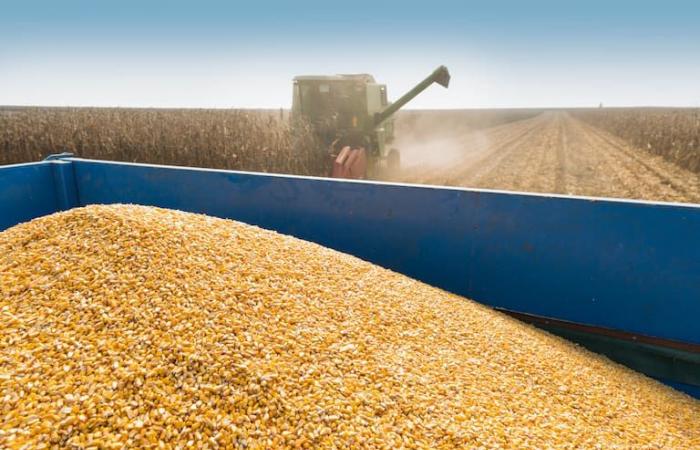Hear
The consultant AZ-Group It drew up 2023/24 corn production scenarios based on data provided by producers in the company’s network. By considering data from 10 areas and projecting that information towards national production, it estimates a 2023/24 scenario that could reach 43.5 million tons as the most probable value, although it could be closer to 40 million if greater damage were observed during the harvest. of late corn.
The production of 43.5 million tons would show losses of around 20% compared to the most optimistic estimates made at the time of sowing (55 million tons) and were mainly caused by complications due to high temperatures in March and the impact of leafhopper attacks. Thus, the uncontrollable development of this insect transformed a harvest that was expected to be “very good” to “good.” However, Matías Amorosi, director of the consulting firm, clarifies that “these projected scenarios should be considered as a current photo of a movie that has not yet finished, because more than half of the corn planted corresponding to late plantings remains to be threshed.”
The estimated harvest of 43.5 million tons faces firm demand because there are already Affidavits of Foreign Sales for 25 million tons, to which is added internal consumption that could reach 18 million tons, which would give rise to an extremely tight final stock. This reality will determine that prices maintain a profitable floor for producers, who should take advantage of the moments of greatest volatility – due to the North American climate market, the need to complete shipments, seasonal consumption, etc. – to build prices for what is harvested.
The other point to take into account when marketing these late batches is their quality, since it is expected that discounts will be significant for not meeting export standards. “In livestock consumption there may be slightly more lax criteria, but punishments may still appear,” the professional advances. Due to the above, a correct marketing strategy for said merchandise must be established to avoid these discounts and thus better defend the product.
The first data on planting intentions from the consulting firm’s clients indicate a 7.5% drop in the area planted with corn in the 2024/25 campaign, mainly due to fear of the “chicharrita effect.” If this behavior of the producers associated with the consulting firm is projected to national production, in a campaign where a La Niña event may occur, the conditions of restricted supply and firm values for corn could continue in the coming months.
Amorosi specifies that the 7.5% reduction in the indicated corn surface is based on a survey on planting intentions; It is not yet a decision made. “There are still open fallows and uncertainty in many companies; What is known is that, in areas where leafhopper attacks were important, it is highly probable that there was a change in the planting of coarse grains replacing corn. The main alternative for change is soybeans, because it has seed availability to significantly increase the area, something that is not possible with sorghum or sunflower, with bags exhausted. Preliminary estimates for these last two crops indicate an increase in the 2024/25 planted area of around 600,000 hectares.
Going forward, the manager warns that this trend of firm domestic corn prices must be validated or not following the evolution of the 2024/25 US campaign, which is developing very well so far and which defines a large part of the international corn market. “They are gears that will be adjusted over time, which will have to be monitored to make decisions at the right times,” Matías recommends.
In the short term, the entry into the market of late corn and Brazilian safrinha may generate an instant oversupply in the month of July. “That is to say, now is a good time to market and the same could happen at the end of the year, when opportunities may appear to secure price floors, since the seasonal downturn occurs between July and October,” he recalls.
“The adverse scenario puts the entire corn commercial chain on alert to see how, both sellers and buyers, work to achieve attractive and interesting businesses for everyone and win-win is achieved. It is clear that the impact is unrelated to the production chain and, therefore, everyone will have to intervene to defend Argentine corn,” Amorosi concludes.
THE NATION




